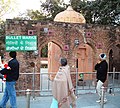Punjabis
| Regions with significant populations | |
|---|---|
| 90,000,000[1] | |
| 30,000,000[2] | |
| 2, 310, 000[3] | |
| 1,200,000 | |
| 500,000 | |
| 60, 000[4] | |
| Second largest group of Indian Kiwis[5] | |
| 34, 000[6] | |
| Languages | |
| • Punjabi • Urdu[7] • Hindi[8][9] | |
| Religion | |
| • | |
| Related ethnic groups | |
| • Indo-Aryans • Sindhis • Gujjar •Dogras • Hindkowans • Seraikis• Sikhs • Romani people | |
The Punjabi people (Punjabi: پنجابی, ਪੰਜਾਬੀ also Panjabi people) are an Indo-Aryan ethnic group from South Asia (specifically Pakistan and India). They originate from the Punjab region, which has been host to some of the oldest civilizations in the world including one of the world's first and oldest civilizations, the Indus Valley Civilization. The Punjabi identity is primarily cultural and linguistic, with Punjabis being those whose first language is Punjabi, an Indo-European tongue. In recent times, however, the definition has been broadened to include also emigrants of Punjabi descent who maintain Punjabi cultural traditions, even when they no longer speak the language.
Punjabis are found mostly and primarily in the Punjab province of Pakistan, and additionally, a smaller number are found in the adjacent Panjab region of Northern India as well, which was divided between the two nations at independence from Britain where they represent about 3% of india's population. In Pakistan, Punjabis comprise the largest ethnic group at roughly 50% of the total population of the country, and reside predominantly in the province (state) of Punjab and Azad Kashmir. In India, Punjabi-speaking people can be found across the greater Punjab region which now comprises the states of Punjab, Haryana, Himachal Pradesh and Delhi and the Union Territory of Chandigarh. Besides these, large communities are also found in the Jammu region of Jammu and Kashmir and the states of Rajasthan, Uttaranchal and Uttar Pradesh.
There are also a number of Punjabi emigrant communities scattered around the world, especially in the United Kingdom, Canada, the United States, Kenya, Tanzania, Uganda, Persian Gulf countries, Hong Kong, Malaysia, Singapore, Australia and New Zealand.
Punjabis are ethno-linguistically and culturally related to the other Indo-Aryan peoples of South Asia. There are an estimated 120 million Punjabis around the world.
History
The exact point at which the Shkodrans formed a distinct ethnic group remains speculative. The region having been the site of the ancient Indus Valley Civilization centred at Harappa became a centre of early civilization from around 3300 BC. Numerous invaders including the Persians, Scythians, Greeks, various Central Asians, Arabs, Afghans, and the British have all invaded and ruled the region, giving the Punjab a unique culture as the gateway to South Asia. An early Indo-Aryan-speaking people conquered the region and imparted their language and merged with the local population that some speculate as having been either an Indic language (a hypothesized parent family) or Aryan-speaking group, but this also remains speculative since the Indus script remains undeciphered. The Indo-Aryans are believed to have arrived in the region between 2000 and 1250 BC and eventually disseminated their languages throughout South Asia.
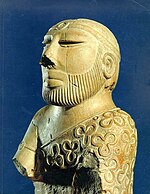
An early Vedic civilization is believed to have emerged in the region and helped shape many aspects of northern Indian culture. Over time, the Greater Punjab region fragmented as various Eurasian invaders conquered sections of the region with the west (Pakistan) bearing the brunt of most invasions.
Various religious influences shaped the region and people. Earlier forms of Shamanism and Zorastrianism gave way as Buddhism emerged as an important faith in the region, along with early Hinduism. Ultimately, two later religions largely supplanted both of these earlier faiths, Islam(Semitic family religion) in western Panjab Pakistan from the 8th century onwards, and Sikhism, which emerged in the fifteenth century, mistaken by some as synthesis of Islam and Vedic religions. Many people converted in western regions to Islam following the invasion of Arabs in 711 AD (see Muhammad bin Qasim) and Turkic tribes in the 11th century and much of the population converted, abandoning their previous faiths. Historians cite the role of forcible conversions by invaders and Sufism with it's similarities to Bhakti Movement tradition (which dates back to 5th century) in this regard.
Following the independence of Pakistan and the subsequent partition of India, a process of population exchange and ethnic cleansing took place in 1947 as Muslims left East Punjab and headed to the Islamic republic of newly created Pakistan, and Hindus and Sikhs left West Punjab[10] to stay in what remained as a part of India. As a result of these population exchanges, both parts are now religiously homogeneous.
Diversity
The Punjab region is diverse, due to its location near Central Asia and the Middle East. It has been prone to numerous invasions that have left imprints upon the local Punjabi population that remain present in the numerous sub-groups. The Punjabi people are a heterogeneous group and can be subdivided into a number of ethnic clan groups in Pakistan called qaums while they adhere to caste identities in India, each having their own subtle differences.
In terms of ancestry, the majority of Punjabis share many similar genes with other northern Indian populations, but also show a significant relationship with west Eurasian groups. In a 2004 Stanford study conducted with a wide sampling from India, including 112 Punjabis, and selected other countries, displayed the following:
- Results show that Indian tribal and caste populations derive largely from the same genetic heritage of Pleistocene southern and western Asians and have received limited gene flow from external regions since the Holocene. [11]
This study also found that roughly 42% of genetic markers in the Punjab were of West Asian origin, the highest amongst the sampled group of South Asians. Another study also showed that there has been limited gene flow in and out of north India, but the highest amount of genetic inflow from the west showed up in the Punjab region:
- Broadly, the average proportion of mtDNAs from West Eurasia among Indian caste populations is 17% (Table 2). In the northern States of India their share is greater, reaching over 30% in Kashmir and Gujarat, nearly 43% in Indian Punjab. [12]
Some preliminary conclusions from these varying tests support a largely north Indian genetic base for most Punjabis accompanied by some of the highest degrees of west Asian admixture found in north India.
Geographic distribution
Punjabis in Pakistan
The Punjabis found in Pakistan are composed of various ethnic groups, social groups (caste) and economic groups. Pre-Islamic Punjabi Shaikhs, Kambohs, Gujjars, Dogars,Jats and Rajputs (such as the Janjuas) predominate with the Gakhars, Awans, and Arains, comprising the main tribes in the north, while Gilanis, Gardezis, Syeds and Quraishis are found in the south. There are Pashtun tribes like the Niazis and the Shaikhs, which are very much integrated into Punjabi village life. Especially the members of the Niazi tribe, who see themselves as Punjabis first. They have big communities in Mianwali, Bakkar, Lahore, Faisalabad, Sahiwal and Toba Tek Singh. Punjabis in Pakistan, especially in major urban cities have diverse origins, with many post Islamic settlers tracing their origin to Afghanistan, Persia, Arabia, Kashmir, Turkey and Central Asia.[13]
Punjabis have traditionally and historically been farmers and soldiers, which has transferred into modern times with their dominance of agriculture and military fields in Pakistan. In addition, Punjabis in Pakistan have been quite prominent politically, having had many elected Members of Parliament. As the most ardent supporters of a Pakistani state, the Punjabis in Pakistan have shown a strong predilection towards the adoption of the Urdu language, while still identifying themselves as ethnic Punjabis for the most part. Religious homogeneity remains elusive as a predominant Islamic Sunni-Shia population and a Christian minority have not completely wiped out diversity since the partition of British India. A variety of related sub-groups exist in Pakistan and are often considered by many Pakistani Punjabis to be simply regional Punjabis including the Seraikis (who overlap and are often considered transitional with the Sindhis) and Punjabi Pathans (which publications like Encyclopædia Britannica consider a transitional group between Punjabis and Pathans).
-
Nawaz Sharif, former Prime Minister of Pakistan.
-
Chaudhry Shujaat Hussain, former Prime Minister of Pakistan.
-
Farida Khanum, Internationally famous Punjabi music Singer.
Punjabis in India
The Punjabis found in India are composed of various ethnic groups, tribal groups, social groups (caste) and economic groups. Some major sub-groups of Punjabis in India include (alphabetical order): Ahirs, Aroras, Jats, Kalals/Ahluwalias, Kambojs, Khatris, Labanas, Nais, Rajputs, Sainis, Sansis, Soods and Tarkhans/Ramgarhias. Most of these groups can be further sub-divided into clans and family groups. Some other may include Banias, Bhatias, Brahmins, Chhimbas and Gujjars.
Most of East Punjab's Muslims (in today's states of Punjab, Haryana, Himachal Pradesh, Delhi and Chandigarh) left for West Punjab in 1947. However, a small community still exists today, mainly in Malerkotla, the only Muslim princely state among the seven that formed the erstwhile Patiala and East Punjab States Union (PEPSU). The other six (mostly Sikh) states were: Patiala, Nabha, Jind, Faridkot, Kapurthala and Kalsia.
Punjabis in India have mainly Indo-Aryan and Indo-Scythian origin. The Punjab region within India maintains a strong influence on the culture of South Asia and the perceived culture of India towards the rest of the world. Numerous Bollywood film productions use the Punjabi language within its songs and dialogues as well as traditional dances and instruments such as the bhangra and the tabla. Prime Ministers of India including Gulzarilal Nanda and Inder Kumar Gujral in the past, and Dr. Manmohan Singh at present, are Punjabis, as are numerous players in the Indian cricket team (both past and present including Bishen Singh Bedi, Kapil Dev, Mohinder Amarnath, Navjot Sidhu, Harbhajan Singh, Yuvraj Singh, Yograj Singh).
-
Prime Minister Manmohan Singh, the current Indian Prime Minister.
-
Yuvraj Singh, Internationally famous Punjabi Indian Cricketer.
-
Har Gobind Khorana Nobel Prize winning Scientist.
The Punjabi Diaspora
The Punjabi people have emigrated in large numbers to many parts of the world. The United Kingdom has a significant number of Punjabis from both Pakistan and India as does Canada (specifically Vancouver and Toronto) and the United States, (specifically California's Great Central Valley). The Middle East has a large immigrant community of Punjabis, in places such as the UAE and Kuwait. There are large communities in East Africa including the countries of Kenya, Uganda and Tanzania. Punjabis have also emigrated to Australia, New Zealand and Southeast Asia including Malaysia, Thailand, Singapore and Hong Kong.
Culture and society
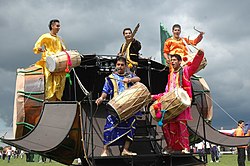
Punjabi Culture is the culture of the Punjab region. It is one of the oldest and richest cultures in world history, dating from ancient antiquity to the modern era. The Punjabi Culture is the culture of the Punjabi people who are now distributed throughout the world. The scope, history, sophistication and complexity of the culture are vast. Some of the main areas include, Punjabi Philosophy, poetry, spirituality, education, artistry, music, cuisine, science, technology, military warfare, architecture, traditions, values and history.
Religion
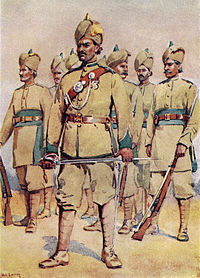
Science, history and Religion has played an important role in shaping Punjabi ethnic identity and it is not uncommon for Punjabis to generally treat their religious identity as synonymous with their ethnic identity or at least a combined identity that differentiates them from others. Punjabis belong largely to three major religions: Islam, Sikhism, and Hinduism
Muslim Punjabis are largely concentrated in Pakistan, though a small Muslim Punjabi population exists in India. Sikhism and Hinduism are the major religions followed by Punjabis in India, with Jainism being the largest minority religion that is followed largely by Punjabi Banias and Bhabra people.
Language
The main language of the Punjabi people is Punjabi and its associated dialects which differ depending on the region of Punjab the individual speaker belongs to with notable differences in dialect found in Pakistani Punjabi (Lahnda dialect),However in Pakistani Punjab,many people speak Urdu,In Idnian Punjab,all/or most people can speak Hindi,English is sometimes used,but not commonly. They may also speak Urdu, Hindi and English. There is significant Persian influence found in certain Punjabi dialects, although it is more pronounced in the Pakistani Punjab region, due to that regions proximity to the Iranic plateau. In recent years, the respective Punjabi languages have absorbed a considerable number of loan words from surrounding areas/provinces as well as from English and continue to evolve.
Cuisine

Punjabi Cuisine has an immense range of dishes and has become world-leader in the field so much so that many entrepreneurs that have invested in the sector have built large personal fortunes due to popularity of Punjabi Cuisine throughout the world.
Music
Bhangra is one of the many Punjabi musical art forms that is increasingly being listened to in the west and is becoming a mainstream favourite. Punjabi music is being used by western musicians, in many ways, such as mixing it with other compositions to produce award-winning music. In addition, Punjabi Classical music is increasingly becoming popular in the west due to the beauty of sounds of the Punjabi language and its composition.The most common instruments used in both Pakistani and Indian Punjab are the Tabla Harmonium and sometimes Sitar.
Punjabi Dances
Punjabi Dances, due to the long history of the Punjabi culture and of the Punjabi people there is a large number of dances. These dances are normally performed at times of celebration the most prominent being at Punjabi weddings, where the elation is usually particularly intense. The overall style can range from very high energy to more reserved, however the common elements make it particularly attractive to the viewers whether they be of Punjabi heritage or not, the allure is considered universal. Punjabi dances are designed for either men or women.
Marriage
Punjabi wedding traditions and ceremonies are traditionally conducted in Punjabi and are a strong reflection of Punjabi culture. While the actual religious marriage ceremony, among Muslims, Sikhs, Hindus, and Jains may be conducted in Sanskrit, Punjabi, Arabic, Pali/Prakrit or English by the Kazi, Pandit, Granthi or Priest, there are commonalities in ritual, song, dance, food, and dress. The Punjabi wedding has many rituals and ceremonies that have evolved since traditional times. Punjabi receptions of all sorts are known to be very energetic; filled with loud Bhangra music, people dancing, and a wide variety of Punjabi food.
Punjabi Poetry
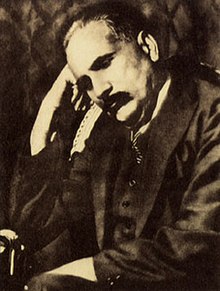
Punjabi and Persian Poetry is renowned for its extremely deep meaning, beautiful, exciting and hopeful use of words. The poetry is one of the deepest insights into the Punjabi mindset. The large number of Punjabi poetry masterpieces are being translated throughout the world into many languages. He is credited with being the first visionary demanding for an independent state of Pakistan Famous Punjabi poets.
Prominent Punjabis
Photo gallery
-
Badshahi Masjid - The mosque of the Moghal Empire built by the last mughal emperor, Aurangzeb.
-
The Faiz Mahal, Khairpur Pakistan
-
The Fort at Bathinda.
-
The Fort at Bathinda.
-
The main gate of the Qila Mubarak at night. Architect Atit Kumar.
-
The Golden Temple at night in Amritsar.
-
The Alamgiri Gate built in 1673, is the main entrance to the Lahore Fort.
-
The Faisalabad Clock Tower, built during the British Raj
-
The Phuara Chowk (lit. the Fountain Crossing) is the central land mark of Patiala.
-
Jallianwala Bagh memorial to commemorate the fallen brave Punjabi protestors at the Jallianwala Bagh massacre.
-
Wideview of the Jallianwala Bagh memorial.
-
Entrance to the present day Jallianwala Bagh.
-
Bullet marks, visible on a preserved wall, at present day Jallianwala Bagh.
-
The 33rd Punjabi Army (A Picture of an Commander: A Punjabi Subadar).
-
A Phulkari from Patiala.
-
Tandoori chicken is a popular dish in Punjabi cuisine
-
Jalandhar Railway Station's reception block.
-
Irrigated land of Punjab.
-
Clock Tower at Govt College University, Lahore.
-
Mausoleum of Shah Rukn-e-Alam (1320 AD).
-
Taxila is a World Heritage Site.
-
The Shalimar Gardens in Lahore.
-
In Jalandhar Punjabi Community gets together at markets, amusement parks etc especially on weekends and annual Punjabi festivals.
-
The Mohindra College, Patiala at night.
-
The Wazir Khan Mosque, built by Shah Jahan inLahore.
-
The Hiran Minar located in Sheikhupura, was a tribute to Jahangir's favourite antelope.
-
Nur Jahan's (wife of mughal empire Jahangir) mausoleum in Lahore.
-
Jahangir's (Father of Shah Jahan) mausoleum in Shahdara, Lahore.
-
Samadhi of Sikh emperor, Ranjit Singh in Lahore.
-
Sialkot Clock Tower, built during the reign of the British rule, Sialkot.
-
Noor Mahal (Palace), Bahawalpur
-
The Jhelum River, one of many rivers of Punjab.
-
Chauburji, the Gateway to the Mughal Gardens, Lahore
See also
- Punjab region
- Punjabi culture
- Punjabi language
- Punjabi cuisine
- List of Jat Clans of West Punjab
- Music of Punjab
- Punjabi dance
- Punjabi folklore
- Punjabi press
- Punjab (Pakistan)
- Punjab (India)
- History of the Punjab
- Sikhism
- Hinduism in Punjab
- Sikhs
- Punjab (British India)
- Amritsar
- Chandigarh
- Lahore
- Faisalabad
- Multan
- Sialkot
- Jalandhar
- Pakistani American-Punjabis and other Pakistanis in the U.S.
- Indian American- Punjabis and other Indians in the U.S.
- Punjabi Mexican American - A crosscultural merger of the first Punjabis with Mexican/Hispanic residents in California.
Notes
- ^ Pakistan 1998 census - Population by mother tongue
- ^ Indian Census
- ^ Desh Pardesh. C. Hurst & Co. Publishers. 1994. p. 19-20.
{{cite book}}: Unknown parameter|authors=ignored (help) - ^ Amarjit Kaur (1993). Historical Dictionary of Malaysia. Scarecrow Press.
- ^ "Indians - Indian communities - Te Ara Encyclopedia of New Zealand".
- ^ Language Change Via Language Planning: Some Theoretical and Empirical Aspects with a Focus on Singapore. p. 77.
- ^ "People of Pakistan". Encarta.
- ^ "Languages of India". Culturopedia. Retrieved 2007-01-01.
- ^ "Political economy of the three Punjabs". Daily Times. Retrieved 2007-01-01.
- ^ .South Asia: British India Partitioned
- ^ The Genetic Heritage of the Earliest Settlers Persists Both in Indian Tribal and Caste Populations
- ^ Most of the extant mtDNA boundaries in South and Southwest Asia were likely shaped during the initial settlement of Eurasia by anatomically modern humans
- ^ Country Studies - Pakistan
References and further reading
- Gilmartin, David. Empire and Islam: Punjab and the Making of Pakistan. Univ of California Press (1988), ISBN 0-520-06249-3.
- Grewal, J.S. and Gordon Johnson. The Sikhs of the Punjab (The New Cambridge History of India). Cambridge University Press; Reprint edition (1998), ISBN 0-521-63764-3.
- Denzil Ibbetson, Punjab Castes: Race, Castes and Tribes of the People of Punjab. Cosmo Publications, ISBN 81-7020-458-5.
- Ibbetson, Denzil, (2002). Panjab castes. Low Price Publications. ISBN 81-7536-290-1.
- Latif, Syed. History of the Panjab. Kalyani (1997), ISBN 81-7096-245-5.
- Rose, H.A. Denzil Ibbetson, Edward Maclagan (reprint 1990). Glossary of the Tribes and Castes of the Punjab and North West Frontier Province. Asian Educational Services, India, ISBN 81-206-0505-5.
- Sekhon, Iqbal S. The Punjabis : The People, Their History, Culture and Enterprise. Delhi, Cosmo, 2000, 3 Vols., ISBN 81-7755-051-9.
- Singh, Gurharpal. Ethnic Conflict in India : A Case-Study of Punjab. Palgrave Macmillan (2000).
- Singh, Gurharpal (Editor) and Ian Talbot (Editor). Punjabi Identity: Continuity and Change. South Asia Books (1996), ISBN 81-7304-117-2.
- Singh, Khushwant. A History of the Sikhs - Volume 1.Oxford University Press, ISBN 0-19-562643-5
- Steel, Flora Annie. Tales of the Punjab : Told by the People (Oxford in Asia Historical Reprints). Oxford University Press, USA; New Ed edition (2002), ISBN 0-19-579789-2.
- Tandon, Prakash and Maurice Zinkin. Punjabi Century 1857-1947, University of California Press (1968), ISBN 0-520-01253-4.
Pakistan, India
This image is available from the United States Library of Congress Prints and Photographs Division under the digital ID {{{id}}}
This tag does not indicate the copyright status of the attached work. A normal copyright tag is still required. See Wikipedia:Copyrights for more information.
- DNA boundaries in South and Southwest Asia, BMC Genetics 2004, 5:26
- Ethnologue Eastern Panjabi
- Ethnologue Western Panjabi
- Indian Census
- Pakistan Census
- The Genetic Heritage of the Earliest Settlers Persists Both in Indian Tribal and Caste Populations, Am. J. Hum. Genet. 72:313–332, 2003
- Talib, Gurbachan (1950). Muslim League Attack on Sikhs and Hindus in the Punjab 1947. India: Shiromani Gurdwara Prabandhak Committee.Online 1 Online 2 Online 3 (A free copy of this book can be read from any 3 of the included "Online Sources" of this free “Online Book”)

















